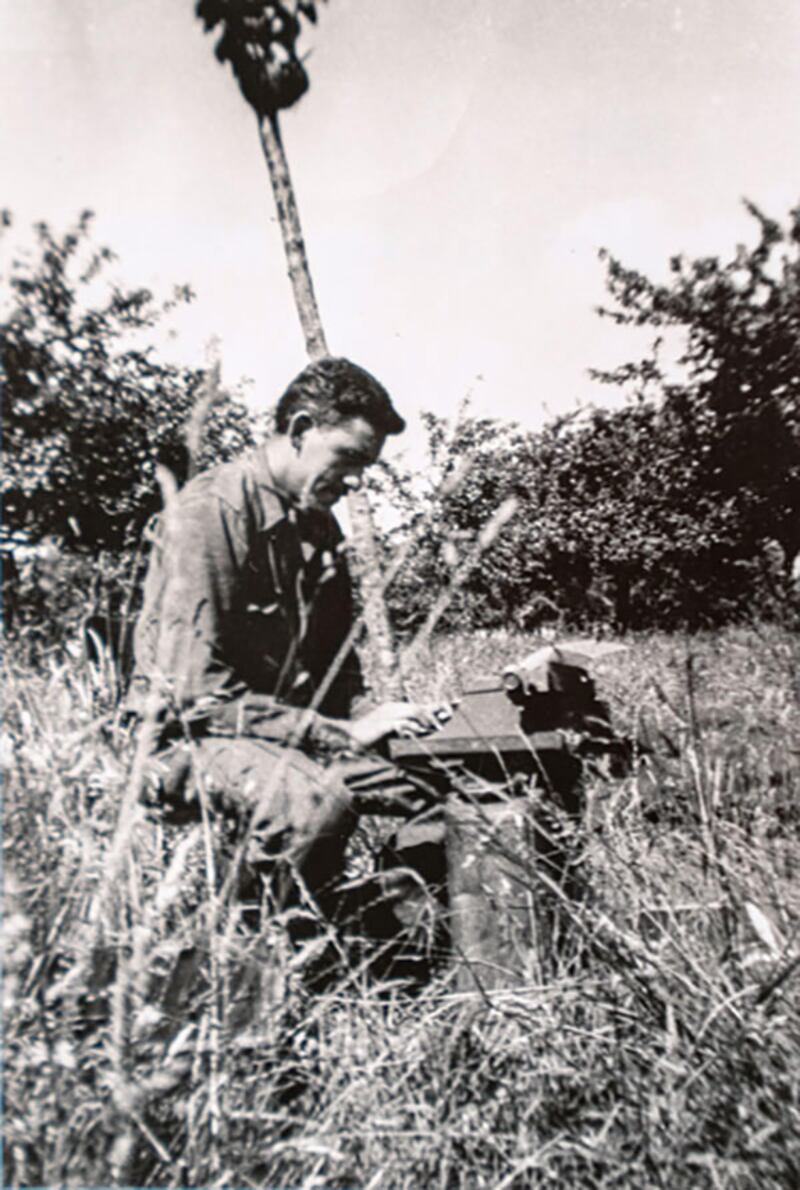This Veterans Day a new J. D. Salinger exhibit at the New York Public Library marking the centenary of the author’s birth reminds us of how important his World War II experience was to him. The exhibit, organized by Salinger’s son, Matt, and his widow, Colleen Salinger, with Declan Kiely, director of special collections and exhibitions at the library, includes over 200 items and features letters Salinger sent and received during his lifetime.
There is much to look at, but in many ways the most revealing letter is one sent to Matt Salinger shortly after his father’s death in January 2010. The letter is from John Keenan, who served with J. D. Salinger in the Army’s Counter Intelligence Corps in Europe.
Keenan, who as the New York City Police Department’s chief of detectives became famous for overseeing the successful 1977 manhunt for the Son of Sam serial killer, wants very much to be consoling in his letter, and he believes the best way he can be that is by describing the Salinger he knew as a member of the Fourth Infantry Division's Counter Intelligence Corps.
“There has been much in the media about his writings, his life-style, his place in American literature, but very little about the four years he gave in the service of his country,” Keenan writes at the start of his letter. “He was in every sense a hero—something of which his grandchildren should be made aware.”
“He was brave under fire and a loyal and dependable partner,” Keenan observes. “On many occasions in the course of an assignment, although pinned down by artillery, machine gun or small arms fire, he did what had to be done.” But for Keenan, what was most telling about Salinger was his refusal to let the brutality of the war harden him. “Did he tell you,” Keenan asks Matt Salinger midway into his letter, “how he saved a group of wounded German soldiers from being executed by understandably fired-up GI’s?”

Salinger, who never rose above the rank of sergeant, believed that World War II was a war America needed to fight, and Keenan’s letter captures the obligation Salinger felt to be part of that fight. As Salinger's leading biographer Kenneth Slawenski has noted, at the start of the war Salinger feared that a minor heart condition would keep him out of the Army. He was relieved to be drafted in 1942.
“I believe in this war,” Babe Gladwaller, a soldier who has Salinger’s exact Army service number, declares in “Last Day of the Last Furlough,” a story Salinger published in The Saturday Evening Post in the summer of 1944. “If I didn’t,” Babe goes on to say, “I would have gone to conscientious objectors’ camp and swung an ax for the duration.”
Salinger had insight into what a Nazi victory would mean as a result of living in Austria less than a year before Germany annexed it, and during the war he got a firsthand view of Nazi death camps that never left him. In her memoir, Dream Catcher, Salinger’s daughter, Margaret, remembers him once telling her, “You never really get the smell of burning flesh out of your nose entirely, no matter how long you live.”
Salinger’s horror at what he and the Fourth Infantry Division had seen was enough for him to briefly check himself into an Army hospital in Nuremberg, Germany, in 1945. “I’ve been in an almost constant state of despondency and I thought it would be good to talk to somebody sane,” Salinger wrote Ernest Hemingway, with whom he had become friends earlier in the war when Hemingway was a correspondent for Collier’s.
Salinger fought the depression that had led him to hospitalize himself. He continued his wartime Counter Intelligence Corps work in the months following Germany’s surrender. Rather than return home after he was discharged from the Army in November 1945, Salinger stayed in Europe until April 1946, helping to pursue the denazification of Germany as a civilian under contract with the U.S. government.
But Salinger never saw himself suffering more than other World War II GI’s. In the October 1945 issue of Esquire, he looked back on his four years in the Army and concluded, “The men who have been in this war deserve some sort of trembling melody rendered without embarrassment or regret.” In his depiction of the returning vets who struggle with civilian life in such postwar short stories as “A Perfect Day for Bananafish” and “For Esme—with Love and Squalor,” Salinger sought to provide his own version of that trembling melody.
Small wonder that John Keenan, who died just this fall, finished his letter to Matt Salinger by saying of his father, “I admired him then and I grieve for him now.” Keenan knew all that Salinger had endured to get the war stories that helped launch his career and in the end made him a writer's writer. “When he found time and under the most adverse of conditions,” Keenan remembered, “he would scribble on his writing pad or peck away at his portable typewriter, which he kept hidden in our jeep.”
Nicolaus Mills is professor of American literature at Sarah Lawrence College and author of Winning the Peace: The Marshall Plan and America’s Coming of Age as a Superpower.







